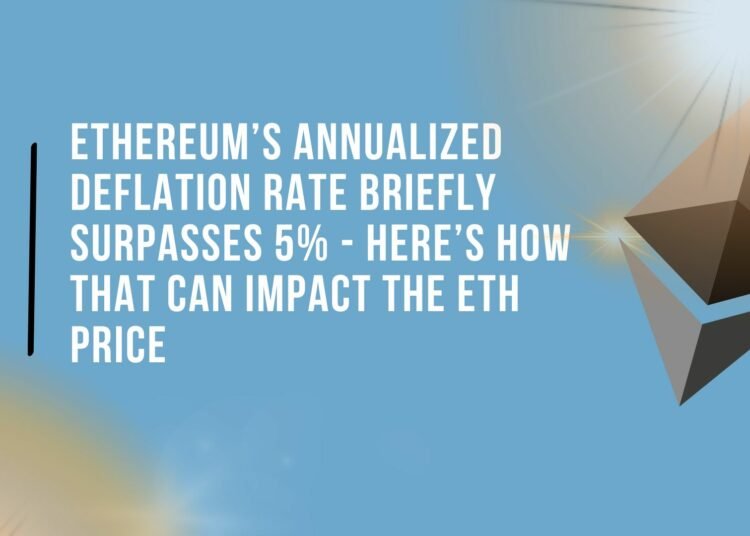Ethereum’s Annualized Deflation Rate Briefly Surpasses 5% – Here’s How That Can Impact The ETH Price
Recently, there has been an increase in the pace of deflation of the Ether (ETH) supply, which has been rising in recent weeks. The cryptocurrency that drives the Ethereum blockchain, which supports smart contracts, is called ether. According to market capitalization, ETH is the second-most valuable cryptocurrency in the world, and the Ethereum blockchain dominates Decentralized Finance.
The annualised burn rate as a result of Ethereum Improvement Proposal 1559 increased this Saturday to 5.679%, surpassing the 0.578% issuance rate of ether by a staggering 5.101%. This is the rate’s highest level since last May. Since then, the deflation rate has decreased, and as of March 15th, it was approximately 1.75 %.
Due to the uncertainty surrounding the series of significant regional US bank failures that occurred last week and the policymakers’ response, cryptocurrency markets experienced extremely high volatility over the past weekend and at the start of this week. After reaching multi-month highs around $1,700 earlier this week, ether was last traded on platforms in the upper $1,600 range.
Explainer – What is Driving the Accelerating ETH Deflation Rate?
We first need to understand why ETH deflation even occurs, which necessitates a grasp of the Ethereum network fee structure, before we can respond to the issue of what is causing the increase in the ETH deflation rate. There are two parts to network fees. In order for their transaction to be accepted and executed on the blockchain, all users are required to pay a base fee.
Then, users have the option of leaving a gratuity to expedite the processing of their transaction. The basic fee is automatically calculated by the Ethereum network and increases during periods of high network activity. All of these base fees paid by users must subsequently be burned in accordance with Ethereum Improvement Proposal (EIP) 1559, which was incorporated into the Ethereum code during the London hardfork in August 2021. This will eliminate the tokens from circulation forever.
As a result, when the base gas fee rises, the rate at which Ether is burned also rises. When this burn rate exceeds the ETH Issuance Rate, which is around 0.55%, the ETH supply will decline. ETH is issued to the nodes and stakers that secure the Ethereum network.
At LBM Solutions, we’re proud to be at the forefront of Ethereum development, offering a range of services to help businesses and individuals take full advantage of this powerful technology. Whether you’re looking to build decentralised applications, create custom smart contracts, or simply invest in Ethereum, our team of experts is here to help. LBM Solutions Is the best crypto token development company. If You Want To Create Your Own Crypto Token Like Ethereum, Please Visit















